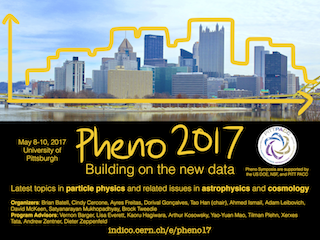Speakers
Description
Radiatively-driven natural SUSY (RNS) models enjoy electroweak
naturalness at the 10\% level while respecting LHC sparticle and Higgs
mass constraints. Gluino and top squark masses can range up to several
TeV (with other squarks even heavier) but a set of light Higgsinos are
required with mass not too far above $m_h\sim 125$ GeV. Within the RNS
framework, gluinos dominantly decay via
$\tilde{g} \to t\tilde t_1^{*},\ \bar{t}\tilde t_1 \to t\bar{t}\widetilde Z_{1,2}$ or
$t\bar{b}\widetilde W_1^-+c.c.$,
where the decay products of the higgsino-like
$\widetilde W_1$ and $\widetilde Z_2$ are very soft. Gluino pair production is, therefore,
signalled by events with up to four hard $b$-jets and large $\not\!\!{E_T}$. We
devise a set of cuts to isolate a relatively pure gluino sample at the
(high luminosity) LHC and show that in the RNS model with very heavy
squarks, the gluino signal will be accessible for $m_{\tilde g} < 2400 \
(2800)$~GeV for an integrated luminosity of 300 (3000)~fb$^{-1}$. We
also show that the measurement of the rate of gluino events in the clean
sample mentioned above allows for a determination of $m_{\tilde g}$ with a
statistical precision of 2-5% (depending on the integrated luminosity
and the gluino mass) over the range of gluino masses where a 5$\sigma$
discovery is possible at the LHC.
Summary
Prospects for gluino discovery and mass measurement at the high luminosity LHC in a class of SUSY models where stops are relatively heavy, but lighter than the relatively heavy (but still accessible) gluino.
